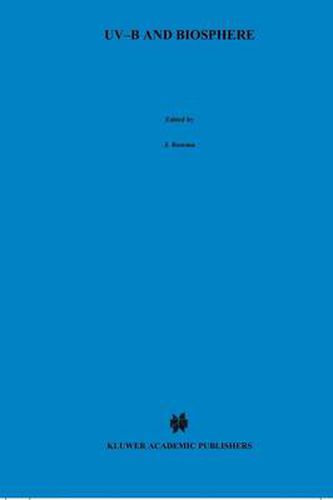Readings Newsletter
Become a Readings Member to make your shopping experience even easier.
Sign in or sign up for free!
You’re not far away from qualifying for FREE standard shipping within Australia
You’ve qualified for FREE standard shipping within Australia
The cart is loading…






This title is printed to order. This book may have been self-published. If so, we cannot guarantee the quality of the content. In the main most books will have gone through the editing process however some may not. We therefore suggest that you be aware of this before ordering this book. If in doubt check either the author or publisher’s details as we are unable to accept any returns unless they are faulty. Please contact us if you have any questions.
Current phase-out schedules of the production and emission of CFC’s indicate that chlorine loading in the stratosphere is not yet at its maximum. The recovery of stratospheric ozone is estimated to take time and ele vated levels of UV-B radiation are expected to occur throughout most of the next century. Despite numerous physiological studies of UV-B effects on plants, often grown in climate chambers, knowledge of UV-B effects on organisms and processes in natural aquatic or terrestrial ecosystems is poor. Currently it appears that UV-B radiation is not just an environmental stress’ factor to plants. In various ways, which are incompletely understood, UV-B affects a wide range of physiological and ecological processes. Remarkably, recent field studies indicate that enhanced UV-B does not markedly affect photosynthesis, growth and primary production, but rather interferes with plant morphogenesis and plant and ecosystem functions relating to the secondary metabolism. This special issue and book UV-B and Biosphere is an attempt to cover this range and to report the progress made in the research of ecological effects of enhanced solar UV-B radiation. The papers in this book formed the basis of an international workshop entitled’ UV-B and Biosphere’ , December 15-18, 1995, in Wageningen, The Netherlands. A first reaction of Hans de Boois on the number of papers and sessions scheduled from Friday to Sunday morning was: far too many.
$9.00 standard shipping within Australia
FREE standard shipping within Australia for orders over $100.00
Express & International shipping calculated at checkout
This title is printed to order. This book may have been self-published. If so, we cannot guarantee the quality of the content. In the main most books will have gone through the editing process however some may not. We therefore suggest that you be aware of this before ordering this book. If in doubt check either the author or publisher’s details as we are unable to accept any returns unless they are faulty. Please contact us if you have any questions.
Current phase-out schedules of the production and emission of CFC’s indicate that chlorine loading in the stratosphere is not yet at its maximum. The recovery of stratospheric ozone is estimated to take time and ele vated levels of UV-B radiation are expected to occur throughout most of the next century. Despite numerous physiological studies of UV-B effects on plants, often grown in climate chambers, knowledge of UV-B effects on organisms and processes in natural aquatic or terrestrial ecosystems is poor. Currently it appears that UV-B radiation is not just an environmental stress’ factor to plants. In various ways, which are incompletely understood, UV-B affects a wide range of physiological and ecological processes. Remarkably, recent field studies indicate that enhanced UV-B does not markedly affect photosynthesis, growth and primary production, but rather interferes with plant morphogenesis and plant and ecosystem functions relating to the secondary metabolism. This special issue and book UV-B and Biosphere is an attempt to cover this range and to report the progress made in the research of ecological effects of enhanced solar UV-B radiation. The papers in this book formed the basis of an international workshop entitled’ UV-B and Biosphere’ , December 15-18, 1995, in Wageningen, The Netherlands. A first reaction of Hans de Boois on the number of papers and sessions scheduled from Friday to Sunday morning was: far too many.